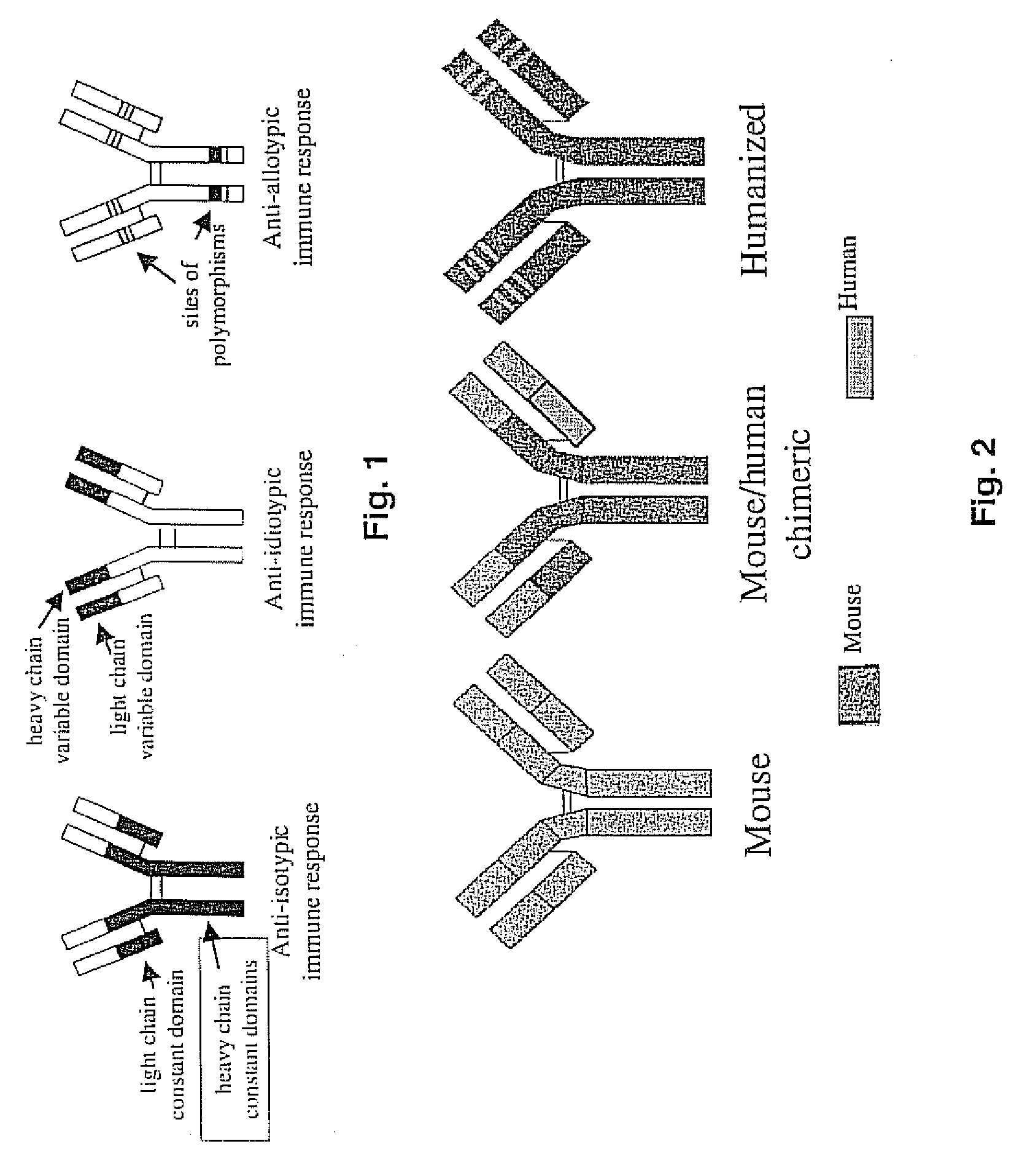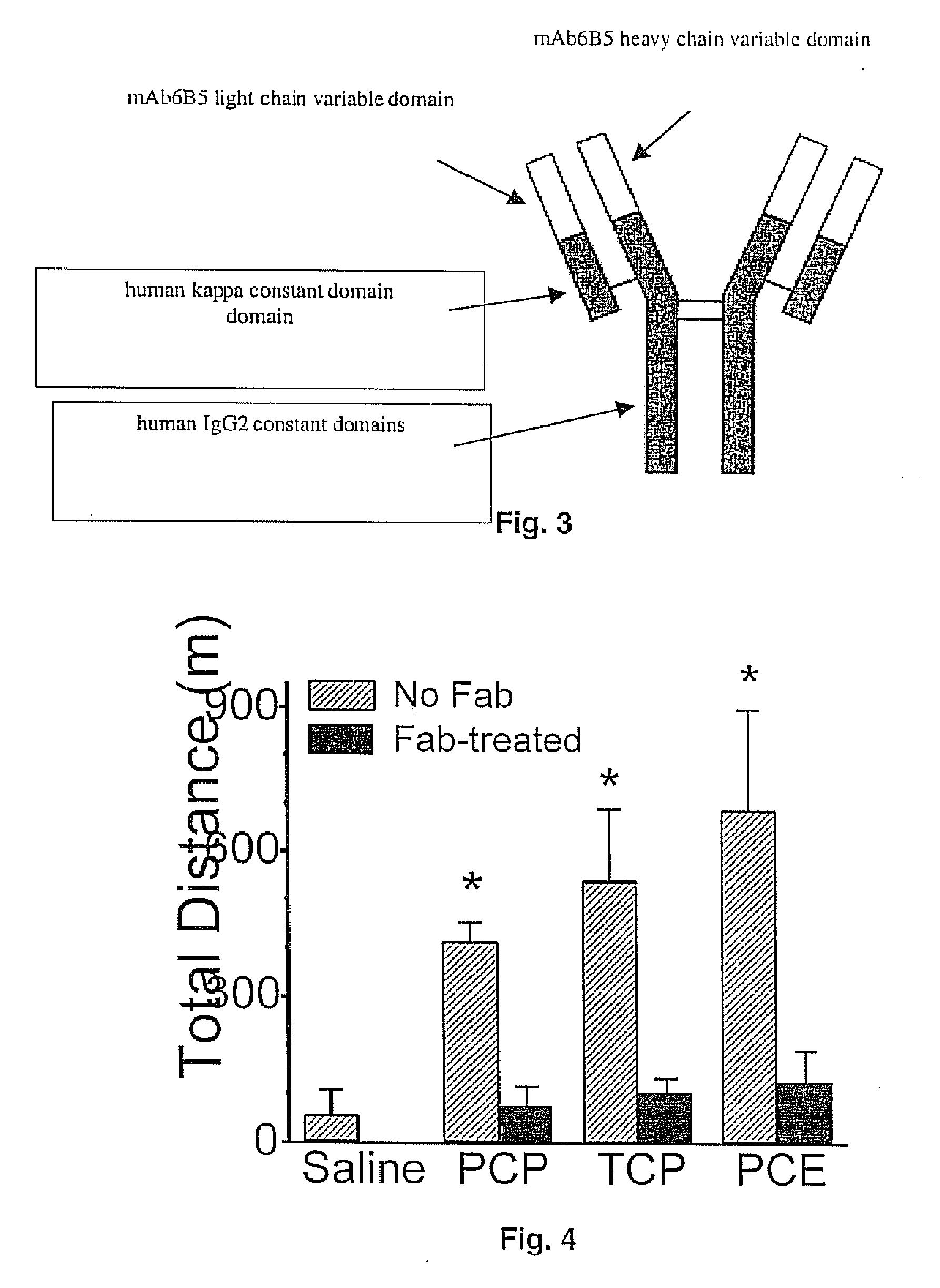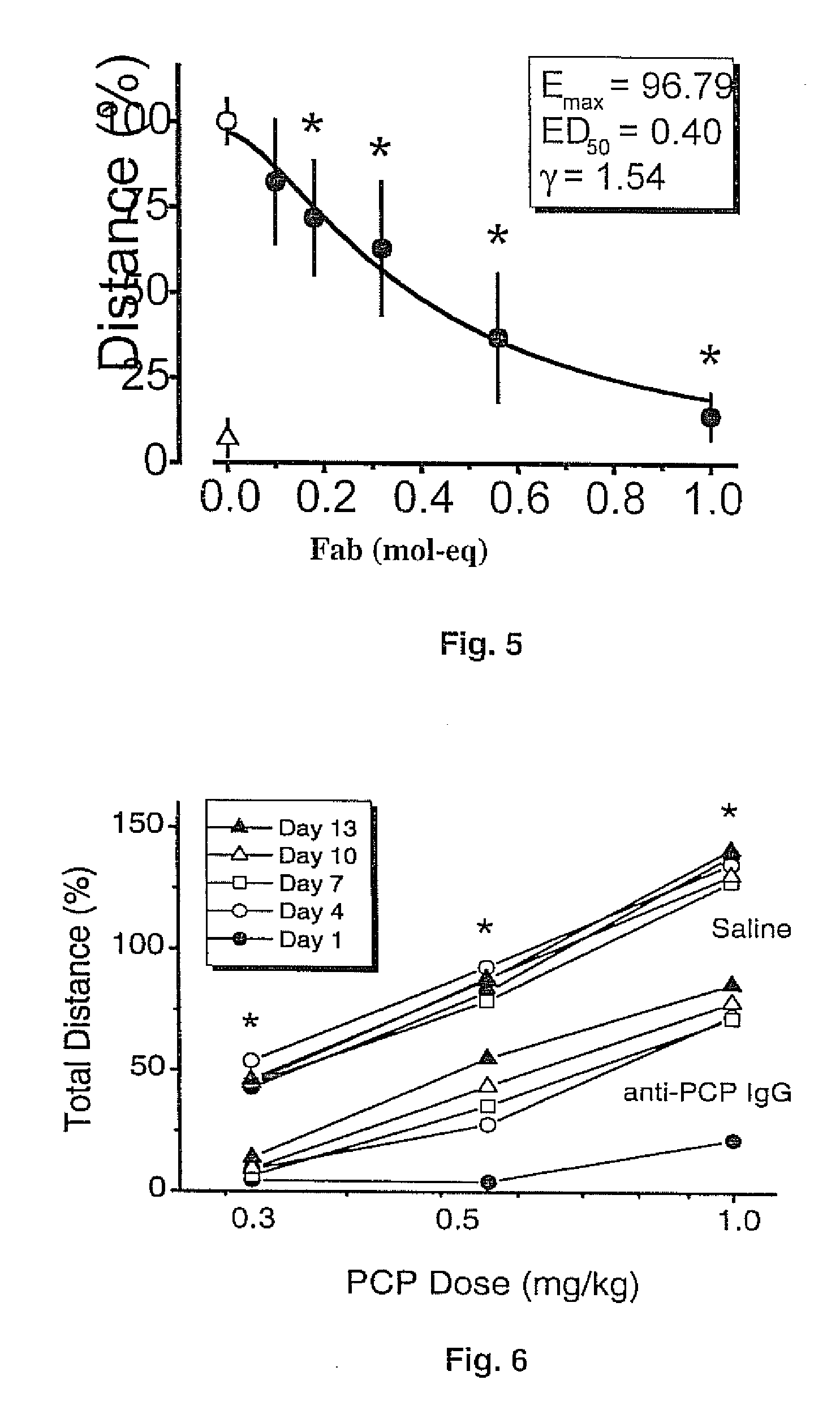Mouse/human chimeric Anti-phencyclidine antibody and uses thereof
a human chimeric anti-phencyclidine and antibody technology, applied in the field of monoclonal antibody technology, can solve the problems of human use abandonment, dose-dependent psychosis, and patients are often violent or very dangerous to themselves and others
- Summary
- Abstract
- Description
- Claims
- Application Information
AI Technical Summary
Benefits of technology
Problems solved by technology
Method used
Image
Examples
example 1
The Antigen-Binding Fragment (Fab) of mAb6b5 Reverses the Locomotor Effects Induced by an Overdose of PCP and Other Arylcyclohexylamines
[0073] These experiments were designed to test the effectiveness of mAb6B5 as a pharmacokinetic antagonist in animal models of human overdose of PCP and PCP-like drugs (i.e. TCP and PCE) (Hardin et al., 1998). If a single dose of Fab reverses the toxic effects of multiple members of the arylcyclohexylamine drug class, then mAb6B5 could be used as an immunotherapeutic agent for the treatment of most of the members of this dangerous class of drugs.
[0074] To test mAb6B5 Fab, male Sprague-Dawley rats were administered intravenously at 3 mg / kg of PCP, TCP or PCE. Thirty minutes after drug administration, mAb6B5 Fab or saline was administered i.v. (FIG. 4). Fab was used instead of the intact IgG molecules because it was hypothesized that Fab would be the best drug overdose treatment since Fab is rapidly cleared. The mAb6B5 Fab has essentially the same ...
example 2
A Single Dose of mAb6b5 IgG Provides Long-Term Reductions in PCP-Induced Locomotor Effects
[0077] These studies tested the hypothesis that a single dose of intact mAb6B5 IgG can provide long-term protection against the effects of repeated PCP administration in rats (Hardin et al., 2002). Male Sprague-Dawley rats received i.v. treatments of saline, non-specific bovine IgG (1.0 mg / kg) or mAb6B5 IgG (1.0 mg / kg) on day 1. The rats were then challenged with escalating doses of PCP (0.32, 0.56, and 1.0 mg / kg) spaced 90 minutes apart. This dosing regimen was repeated on days 4, 7, 10 and 13 (totaling 15 PCP doses) (FIG. 6). The experiments were terminated after two weeks because of cannulae failure, which occurred at periods longer than two weeks dosing. In terms of human PCP use, this regimen would equate to about 45 recreational doses (at 5 mg / dose) over a long period of time (at least 2-3 months).
[0078] Locomotor activity (the total distance traveled) for each rat was measured using t...
example 3
mAb6B5 IgG Provides Long-Term Neuroprotection
[0079] These studies demonstrated that a single large dose of mAb6B5 IgG provides long-term reductions in brain PCP concentrations, despite continuous PCP administration (Proksch et al., 2000). Rats were implanted with s. c. osmotic minipumps filled to deliver PCP at a rate of 18 mg / kg / day. Steady-state PCP concentrations were achieved at less than 24 hr since the PCP half-life (t1 / 2) is 4 hr. At 24 hr after implantation of the pumps, a mol-eq dose of a mAb6B5 IgG binding sites was administered intravenously. The PCP infusion continued for up to 27 days (approximately one month). At selected time points after administration of the antibody, brain, serum and testis PCP concentrations were measured in groups of animals.
[0080] After mAb6B5 administration, serum PCP concentrations rapidly increased approximately 300-fold, while there was a complete removal of PCP from the brain within 15 min, which persisted for the first 4 hr (FIG. 7). In...
PUM
| Property | Measurement | Unit |
|---|---|---|
| Weight | aaaaa | aaaaa |
| Weight | aaaaa | aaaaa |
| Length | aaaaa | aaaaa |
Abstract
Description
Claims
Application Information
 Login to View More
Login to View More - R&D
- Intellectual Property
- Life Sciences
- Materials
- Tech Scout
- Unparalleled Data Quality
- Higher Quality Content
- 60% Fewer Hallucinations
Browse by: Latest US Patents, China's latest patents, Technical Efficacy Thesaurus, Application Domain, Technology Topic, Popular Technical Reports.
© 2025 PatSnap. All rights reserved.Legal|Privacy policy|Modern Slavery Act Transparency Statement|Sitemap|About US| Contact US: help@patsnap.com



